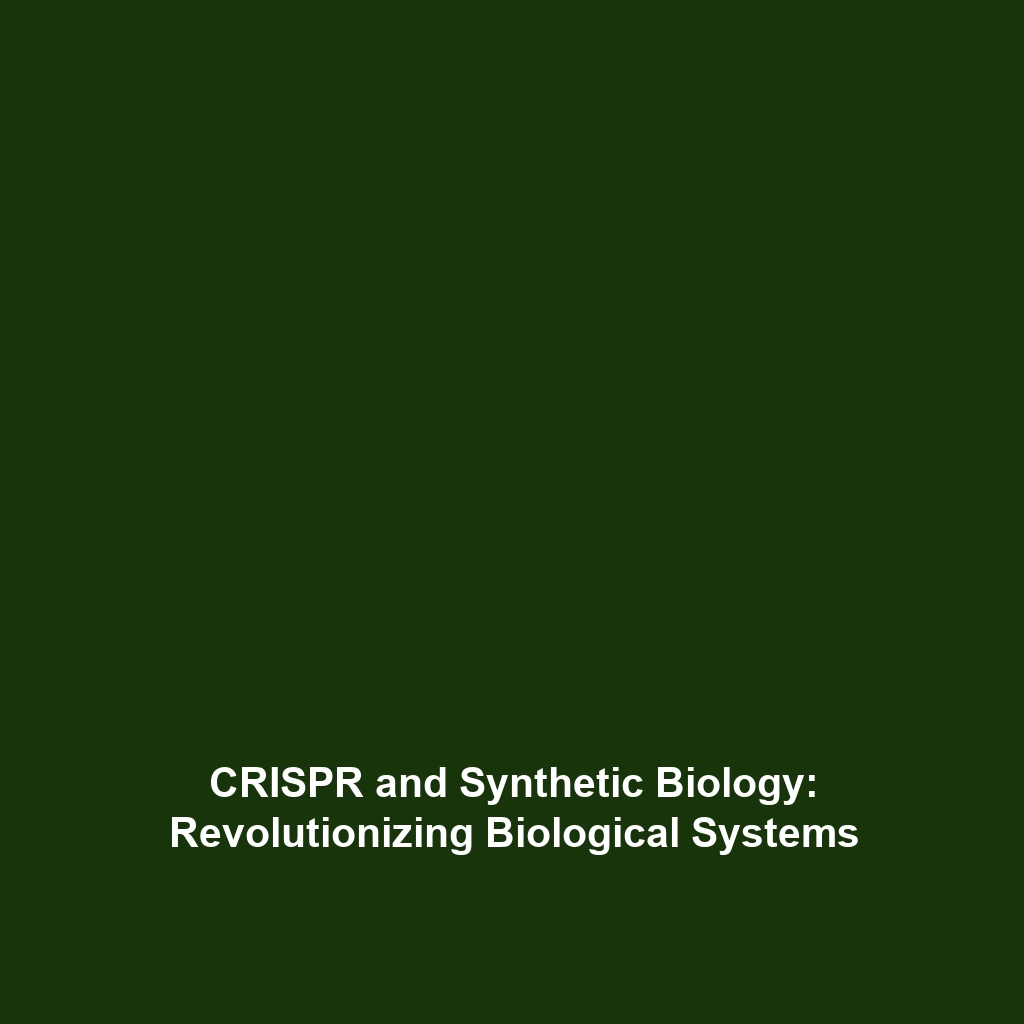Examples of CRISPR-Edited Crops: Tomatoes, Wheat, and Rice
CRISPR gene editing is revolutionizing agriculture, providing scientists and farmers with unprecedented tools to enhance crop traits. Examples of CRISPR-edited crops, such as tomatoes, wheat, and rice, showcase how this groundbreaking technology can lead to improved yields, disease resistance, and nutritional content. As the world faces increasing challenges from climate change and food security, understanding the implications of CRISPR-edited crops becomes essential. This article delves into critical examples, applications, challenges, and future innovations in CRISPR gene editing.
Key Concepts of CRISPR-Edited Crops
To comprehend the significance of CRISPR-edited crops, it’s important to understand some key concepts associated with CRISPR gene editing:
- Gene Editing: A method that alters an organism’s DNA, allowing for precise adjustments to traits.
- CRISPR-Cas9: The most well-known and widely used CRISPR system, which includes a guide RNA and the Cas9 enzyme that cuts the DNA.
- Targeted Modifications: CRISPR allows for targeted changes, such as introducing disease resistance in tomatoes or improving drought tolerance in wheat.
Applications and Real-World Uses of CRISPR-Edited Crops
CRISPR technology has led to several notable applications in agriculture. Here are some significant practical uses:
- Tomatoes: CRISPR has been used to enhance the flavor and shelf-life of tomatoes by modifying specific genes.
- Wheat: Scientists are using CRISPR to create wheat varieties resistant to certain fungal diseases, helping to increase yield and reduce pesticide use.
- Rice: Edits have been made to improve the nutrient content in rice, which is crucial for food security in developing countries.
These applications illustrate how CRISPR gene editing is transforming crop biotechnology, offering solutions to pressing agricultural challenges.
Current Challenges of CRISPR-Edited Crops
Despite its promise, there are several challenges and limitations in the field of CRISPR-edited crops:
- Regulatory Challenges: Different countries have varying regulations surrounding genetically modified organisms, complicating the approval process.
- Ethical Considerations: The use of gene editing raises ethical questions about human intervention in natural processes.
- Public Perception: Misinformation and fear around GMOs can hinder acceptance of CRISPR technologies.
Future Research and Innovations
Looking ahead, several innovations and research initiatives are underway in the realm of CRISPR-edited crops:
- Next-Gen CRISPR Techniques: Emerging methodologies such as CRISPR base editing and prime editing promise greater precision and fewer unintended effects.
- Broadening Applications: Researchers are exploring the use of CRISPR in a wider variety of crops, enhancing genetic diversity.
- Climate Resilience: Future studies aim to develop crops that can withstand extreme climate conditions, ensuring food security in changing environments.
Conclusion
Examples of CRISPR-edited crops, including tomatoes, wheat, and rice, highlight the transformative potential of CRISPR gene editing in agriculture. As researchers continue to explore innovative applications and overcome current challenges, the future of CRISPR technology looks promising. For further reading on the implications of gene editing in food security and sustainability, explore our additional resources on genetic modification and agricultural innovation.
This -formatted article provides a comprehensive overview of examples of CRISPR-edited crops while maintaining a structure that enhances readability and SEO performance. The content is rich with relevant keywords, organized into sections with headings and lists for clarity, and includes calls to action for further exploration of related topics.








